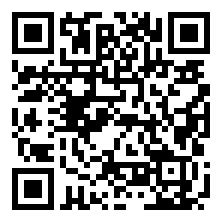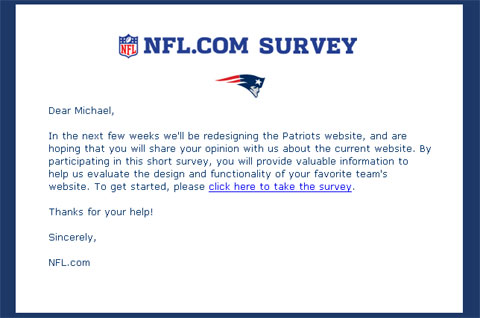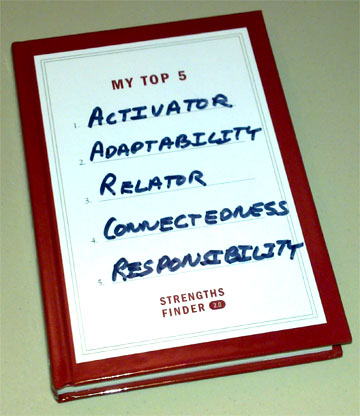QR Codes In Action On The Hot Iron Every Week
 There is no shortage of discussion on QR codes. Whether people are asking what the heck they are to weighing the merits of using them, QR codes are a phenomenon that is not going away any time soon. How far they go is very much part of the discussion.
There is no shortage of discussion on QR codes. Whether people are asking what the heck they are to weighing the merits of using them, QR codes are a phenomenon that is not going away any time soon. How far they go is very much part of the discussion.
QR codes tie the offline and online worlds with simplicity. By scanning them with your smartphone (or even Web cam) you will get information – from a URL to a full contact record to a short message. This is my definition, and there are many out there. But rather than focus on the ultimate definition for a QR code, I’d rather show how they are being used.
Starting today and every Wednesday I will show a QR code in action. Each post will feature a picture of a QR code I take over the course of my day. I will describe how it is being used, and of course provide any commentary as appropriate.
Watch for QR Codes in Action here at The Hot Iron as part of the regular RSS feed or by viewing just the QR Codes in Action posts. I welcome your comments and questions, and if you want to learn more how you can use QR codes for your business, please contact us at Dunkirk Systems, LLC.
Did you enjoy reading this? You are welcome to subscribe to The Hot Iron by RSS feed or by email.
Is The NFL Moving To A Unified Web Site?
Over the holidays I caught up on reading and responding to email, in the process managing both my personal and work email inboxes to zero. One of the messages I processed came from the National Football League, or NFL. As I am a New England Patriots season ticket holder, this is probably why I received it. An image of the short message is below:

The message text read as follows:
Dear Michael,
In the next few weeks we'll be redesigning the Patriots website, and are hoping that you will share your opinion with us about the current website. By participating in this short survey, you will provide valuable information to help us evaluate the design and functionality of your favorite team's website. To get started, please click here to take the survey.
Thanks for your help!
Sincerely,
NFL.com
After reading it and re-reading it, as well as taking the brief survey, I had one question, are NFL team Web sites moving to a unified platform?
Such a move does not surprise me, as other sports leagues have taken a similar approach. Major League Baseball, or MLB, first comes to mind as they made this move many years ago. Other US pro sports leagues, such as Major League Soccer and the National Hockey League also have. The National Basketball League (NBA) appears to have, but the Boston Celtics Web site appears different from the other NBA team Web sites, though it does not mean it’s not on a common platform.
Having all team Web sites on a common platform provides many gains, which outweigh the negatives. First and foremost is cost and technical management – no need for 32 separate Web sites (there are 32 NFL teams), where you technically have one. Each team Web site (or section of the NFL site) will have a similar navigation structure, making it easy for the Web visitor to navigate from team-to-team. You still have your team-based content writers and coordinators, or whatever their title would be. You can also better leverage content across team sites with relative ease, both the written word and rich media, and the latter may be driving much of this. MLB has been very successful and providing broadcasts and audio and video of games, and charging for it. The NFL, which is known for its high-quality NFL Films, will probably make a similar offer.
If there are any drawbacks from combining Web sites is the complete control of the look and feel and overall content of the Web site. This will be more of an internal team issue than for the fans. Hopefully combining all Web sites will force all teams to offer a consistent level of quality content and design, where currently some team sites offer more content than others, not to mention some have a better design as others.
I performed a few searches and did not see anything specifically mentioning any form of unifying move. I welcome any thoughts and opinions on this, not just from a sports standpoint but from a branding and design view as well. Plus any insight into if the NFL is actually doing this is welcome too.
Did you enjoy reading this? You are welcome to subscribe to The Hot Iron by RSS feed or by email.
Next likemind Chicago on Friday January 21
 The next likemind will be Friday, January 21, 2011 in dozens of cities around the world.
The next likemind will be Friday, January 21, 2011 in dozens of cities around the world.
In Chicago, it will be at Argo Tea, 140 S Dearborn St. at the corner of Adams and Dearborn Streets in the Loop from 8:00 am to 10:00 am.
I call likemind a gathering of creative-minded people, from various disciplines including Internet, advertising, art, social media, et. al. For more on likemind, read this great article on likemind Chicago from the Newcity and likemind from the New York Times. Follow @likemindchicago on Twitter.
Did you enjoy reading this? You are welcome to subscribe to The Hot Iron by RSS feed or by email.
My Takeaways From The Book Social Nation
“They just don’t get it” is a phrase I hear a lot when people who work in social media talk about people or companies that are new, struggling or resistant to being immersed in social media. Part of this frustration on those who are consumers or consultants is around the educational component of it. Part of the frustration of those who don’t know or understand social media is the complete need to be educated on something that, in many cases, is altogether new to them. Thus there is a need for education to make everyone’s lives easier.
Educating people on social media, from organizational cultural change to actually tweeting and everything else in between and around it is the talk in Social Nation: How to Harness the Power of Social Media to Attract Customers, Motivate Employees, and Grow Your Business, a book by Barry Libert. The author presents a good book in Social Nation on what social media is, and does a great explanation that it is not just a plug into an organization, rather in some cases how it drives change and thinking of what an organization actually does.
As a believer, practitioner and “walk the talker” of social media, did I have takeaways from this book? Surely. And many of these are driven by interactions with clients and prospective clients with regards to their approach to social media.
Getting into social media today is more complicated than getting into the Web in its early days – I recall fondly building my first commercial Web sites for clients going back to the mid 1990’s. Back then it involved a lot of education and there were always new and changing elements. Today it seems like all that is involved in social media, still in its infancy, is much more comprehensive, intricate and to some complicated than the Web’s infancy. Working with one firm for a Web site may have been all you needed then, today you may work with one offering many services, or many offering just one.
Explaining it is not enough and may not always be relevant – just like businesses need to define their niche, social media needs to be articulated to that niche for it to truly be understood. In the book, Libert gives examples about Zappos, Apple, Google and Ducati, but very few about small to mid-sized businesses. These are good examples, but as I can see using his book as one to offer to a client or a prospect client to digest, more relevant issues to less than large companies are more relevant to a small business, especially as I see more copies of this book being read by entrepreneurs than corporate executives.
You need to talk to everyone – Often people think being a social company is just talking to customers, when it should be to talk to everyone, including all employees, partners, investors, etc. Having a common voice to all will make communication overall easier.
Social Nation is a good primer for a business or individual currently not using social media, or is personally but not professionally. It is not for someone already engaged or working with social media, such as myself, as the book is preaching to the proverbial choir at that point. Although saying that, the accompanying Web site to the book, at socialnationbook.com - offers a unique and interesting social quotient (SQ) test. Coming off of reading StrengthsFinder 2.0, this was a similar experience. So what is my SQ? The 3 words that were presented to me after the quiz were Visionary, Creative Thinker and Transparent. You can take the quiz yourself, and there is no charge for it.
Did you enjoy reading this? You are welcome to subscribe to The Hot Iron by RSS feed or by email.
My Takeaways From The Book StrengthsFinder 2.0
Previously I talked about playing to your strengths. This doesn’t mean being complacent and not growing yourself. Hardly, it says rather than focusing solely on being super humanoids, let’s look at what we do best and leverage the heck out of it.
Among all the self-help business books out there is one which focuses on this – helping you identify your strengths and how to use them to your advantage. StrengthsFinder 2.0 is from the Gallup Organization. It is the second edition of a book which came out from the poll people in 1998. This book was recommended to me by a colleague and I bought my own copy of the book.
StrengthsFinder 2.0 comes with a single-use code for an accompanying Web site. The main feature of the site is the assessment. It is a survey which takes about a half hour to respond to all questions, and upon completion it gives you a list of your top 5 strengths, which come from a pre-defined list of 34. I took the assessment test first then read the book, upon my colleague's recommendation, rather than reading the book first. He recommends this approach so that the person who takes the assessment will have no preconceived notions of what the results will be.
After taking the Web-based assessment, here’s my top 5 strengths:
The above photo is of the cover of the book, where you can write your strengths after removing the dust jacket. If you don’t see the photo, my top 5 strengths are: Activator, Adaptability, Relator, Connectedness, and Responsibility.
Now What?
After I got my results from the assessment, I sat back and took a look at the 5 words given to me. At first glance, they were not a complete shock or surprise to me. I like to think I know myself pretty well, and coupled with what others have said to me about me, these were in line with what I would expect from such an assessment. That being said, I did not know specifically these would come up as my top 5 strengths, so it was a good use of my time.
I then went to the book, reading the opening then the write-ups on my top 5 strengths. For each, there is a brief discussion on it, quotes from a selected people who have the same strength, “ideas for action” on how to leverage this strength, and tips for working with someone else with the same strength. Following reading on my top strengths I read through the remaining 29 strengths defined in the book. After reviewing the entire list and reflecting on all of it, there certainly are others strengths defined which would apply to me, but I am not discounting the top 5 selected as it is a good list to work with.
My takeaway from StrengthsFinder 2.0 is the overall experience that is the book, from the assessment to the discussion on all strengths identified. Although I don’t consider myself an expert at assessing people, I do consider myself a decent judge of character and how to get the most out of people whom I work with. As Gallup is the expert at surveying, this was a great process to see how the questions in the assessment derived this list. The Web site has other tools, including one which allows you to make a poster of your strengths. I have this posted in my office, and glance at as a reminder on occasion.
I recommend StrengthsFinder 2.0 to anyone who is interested in playing to their strengths. It was not a complete life-changing experience for me, rather a good reaffirmation of who I am and what I can do. I do recommend getting a new copy of the book so you can get the code to take the assessment and get the full effect of the book.
This is from The Hot Iron, a journal on business and technology by Mike Maddaloni.
Did you enjoy this? Subscribe to The Hot Iron by RSS/XML feed or Read by Email.
Book Take-Aways • Business • Strategize • (2) Comments • Permalink




